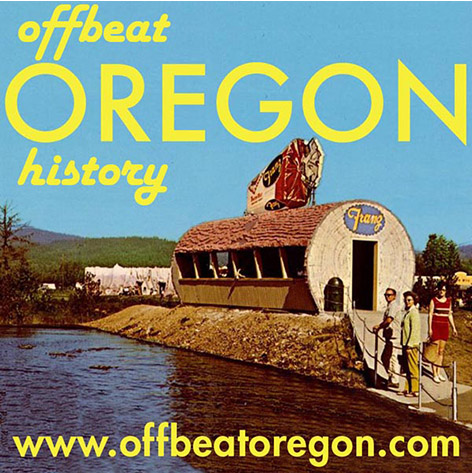PORTLAND, MULTNOMAH COUNTY; 1960s:
His cheating heart cost Oregon journalism dearly
Audio version: Download MP3 or use controls below:
|

It didn’t look like it was going that way at first, though. After the stereotypers walked out, they threw a picket line up around the building, and a picket line was not something one lightly crossed back in ’59. Hundreds of other employees stayed away from work, effectively swelling the number of strikers. In response, Newhouse brought in a cadre of out-of-state strikebreakers — some of whom turned out to be thugs with sawed-off shotguns and prison records — to keep the paper going. These turned out to be better at making trouble than they were at making a newspaper, and The Oregonian’s quality suffered shockingly, which made the union organizers’ door-to-door efforts to get locals to cancel their subscriptions that much easier. Meanwhile, over at the Oregon Journal — the competing Portland daily newspaper, which was still locally owned — one might have expected things to be going rather better. In fact, they were going much worse. The Journal and The Oregonian had made a deal for both newspapers to bargain together with the unions; this meant that even though the Journal had no dog in The Oregonian stereotypers’ fight, it was forced into it, essentially, by treaty obligations. And unlike The Oregonian, the Journal was not financially prepared for it. The Journal was no longer being run by the family that had founded it back in 1902. Fearsome newsman Sam Jackson, and later his son Philip, had built it from nothing into Portland’s leading newspaper. But by the late 1950s all members of the family were dead. And the last surviving Jackson, Sam’s widow Maria, had left specific instructions in her will that the paper was under no circumstances to be sold to Newhouse. But it was no secret that Newhouse wanted very much to buy it, so that he could enjoy an effective local monopoly; and the trustees were quite willing to sell it to him, if they could just figure out how to get around Maria Jackson’s posthumous edict. They’d already defeated one such edict. In her will, Maria had instructed that all the family’s stock in the company was to be distributed to the employees. But the trustees had challenged the bequest, and got a judge to rule that she had made it in “wishful” language, and that it was therefore null and void; so, the trustees got to keep control. Needless to say, Newhouse found these trustees far easier to work with than would have been the case had the Journal been owned by its employees – especially during the strike.
SO THE YEAR 1960 found the Journal hard-pressed, and The Oregonian not much better. They’d teamed up to produce a single edition, the Oregonian-Oregon Journal, which was delivered to all their dwindling subscribers; but delivery was suddenly very uneven, and the quality of the newspaper was terrible. Cancelations were pouring in. It would have appeared to anyone looking, in early 1960, like the unions were going to win this fight. But that’s when one of the members of the stereotypers’ union — the union that started the whole thing — made a crucial mistake. And although that mistake wouldn’t put the kiss of death on the whole operation — that would happen the following year, with the shooting outside Donald Newhouse’s basement window — it would set the stage for it. Because, how hard is it to believe a union will try to murder the manager, after the union has hired bombers and given them dynamite? We’ll talk about that bombing, and the events that followed, in next week’s column.
|
Background photo is a hand-tinted image of Cape Disappointment Lighthouse at the mouth of the Columbia River, published circa 1910 on a picture postcard.
Scroll sideways to move the article aside for a better view.
Looking for more?
On our Sortable Master Directory you can search by keywords, locations, or historical timeframes. Hover your mouse over the headlines to read the first few paragraphs (or a summary of the story) in a pop-up box.
... or ...

©2008-2016 by Finn J.D. John. Copyright assertion does not apply to assets that are in the public domain or are used by permission.

